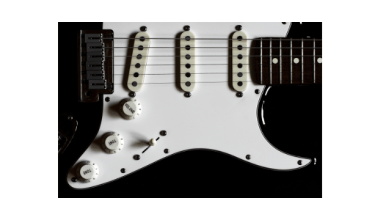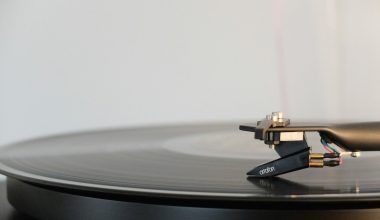Music is like magic. It makes us feel happy, sad, or excited. But do you know how music works? That’s where music theory basics come in! Think of music theory as the grammar of music. It tells us why some sounds feel good together and how songs are built.
Whether you want to write songs, play an instrument, or just understand music better, learning music theory can help. Don’t worry if you’re new to this. By the end of this guide, you’ll know all the important stuff, and it’ll be fun too!
What Is Music Theory?
Music theory is the study of how music works. It explains the “rules” of music and helps us understand why it sounds the way it does. Imagine you’re learning a new language. Music theory is like the dictionary and grammar book for the language of music.
Why Should You Learn Music Theory?
- To Play Better: Knowing music theory makes it easier to play an instrument.
- To Write Songs: It helps you create your own music.
- To Enjoy Music More: When you understand music, it becomes even more magical.
The Building Blocks of Music: Notes
Let’s start with the most basic part of music: notes. Think of notes as the alphabet of music. Just like letters make up words, notes make up melodies and chords.
The Musical Alphabet
The musical alphabet is simple:
- A, B, C, D, E, F, and G.
These letters repeat over and over, creating higher and lower sounds called octaves.
Sharps and Flats: What Are They?
Sometimes a note is a little higher or lower. That’s where sharps (#) and flats (b) come in:
- A sharp means the note is a little higher.
- A flat means the note is a little lower.
For example:
- C# is a little higher than C.
- Bb is a little lower than B.
Scales: The Foundation of Music
Scales are like ladders made of notes. They’re one of the most important parts of music theory basics because they give us the framework for songs and melodies.
Major and Minor Scales
There are many types of scales, but the two most common are:
- Major Scales: These sound happy and bright.
- Minor Scales: These sound sad or emotional.
How to Build a Major Scale
There’s a simple pattern to create a major scale:
- Whole step, whole step, half step, whole step, whole step, whole step, half step.
Let’s try the C Major scale:
- Start at C, then go up: C, D, E, F, G, A, B, and back to C.
Chords: The Power of Groups
A chord is when you play several notes together. Chords add depth to music. Without chords, songs would sound flat.
Types of Chords
- Major Chords: These sound happy (e.g., C Major: C, E, G).
- Minor Chords: These sound sad (e.g., A Minor: A, C, E).
- Diminished Chords: These sound tense or scary.
- Augmented Chords: These sound unusual or dreamy.
How to Make a Simple Chord
To build a chord:
- Start with a note (the root).
- Add a note 4 steps above it (the third).
- Add another note 7 steps above it (the fifth).
For example:
- A C Major chord is C, E, and G.
Rhythm: The Heartbeat of Music
Have you ever tapped your foot to a song? That’s rhythm! It’s the part of music that makes you want to move.
Key Parts of Rhythm
- Beat: The steady pulse of a song.
- Tempo: How fast or slow the song is.
- Time Signature: Tells how many beats are in a measure. For example:
- 4/4 time means 4 beats in each measure.
- 3/4 time means 3 beats in each measure.
Harmony: Making Music Richer
Harmony happens when different notes are played together. It’s what makes music sound full and rich.
Two Types of Harmony
- Consonance: Sounds that feel pleasant and stable.
- Dissonance: Sounds that feel tense or clashing.
Both are important in creating emotion in music.
Intervals: The Space Between Notes
An interval is the distance between two notes. For example:
- From C to E is called a major third.
- From C to G is called a perfect fifth.
Dynamics: Playing with Feeling
Dynamics tell us how loud or soft to play music. It adds emotion to the song.
Common Dynamic Terms
- Piano (p): Play softly.
- Forte (f): Play loudly.
- Crescendo: Get louder gradually.
- Decrescendo: Get softer gradually.
Ear Training: Listening Like a Pro
Have you ever wondered how some musicians can play songs by ear? They’ve trained their ears to recognize notes, chords, and rhythms.
Easy Ear Training Tips
- Listen to a song and try to hum along.
- Practice identifying the sound of major and minor chords.
- Use apps or online tools for ear training.
How to Use Music Theory in Real Life
Music theory is not just about learning—it’s about doing! Here’s how you can use what you’ve learned:
- Write Songs: Create catchy melodies and powerful chords.
- Play with Others: Communicate better in a band or orchestra.
- Improvise: Play music on the spot with confidence.
Fun Facts About Music Theory
- The world’s oldest known song is over 3,000 years old!
- Some cultures use scales with more than 12 notes, called microtonal music.
- Beethoven continued composing music even after he became deaf.
Common Questions About Music Theory
Is Music Theory Hard to Learn?
Not at all! Start with music theory basics like notes and chords, and take it one step at a time.
Can I Learn Music Theory Without an Instrument?
Yes! You can learn by listening to music, reading about theory, and practicing ear training.
Keep Going: Your Music Journey Awaits
Learning music theory basics is like unlocking a treasure chest. It gives you tools to create, play, and enjoy music in a whole new way. Remember, every musician started as a beginner, just like you. Keep practicing, stay curious, and most importantly—have fun!
Related Articles:
For further reading, explore these related articles:
- The Ultimate Hip-Hop Legends List – A Journey Through Time
- The Best Metal Bands That Shaped the World of Heavy Music
For additional resources on music marketing and distribution, visit DMT RECORDS PRIVATE LIMITED.






